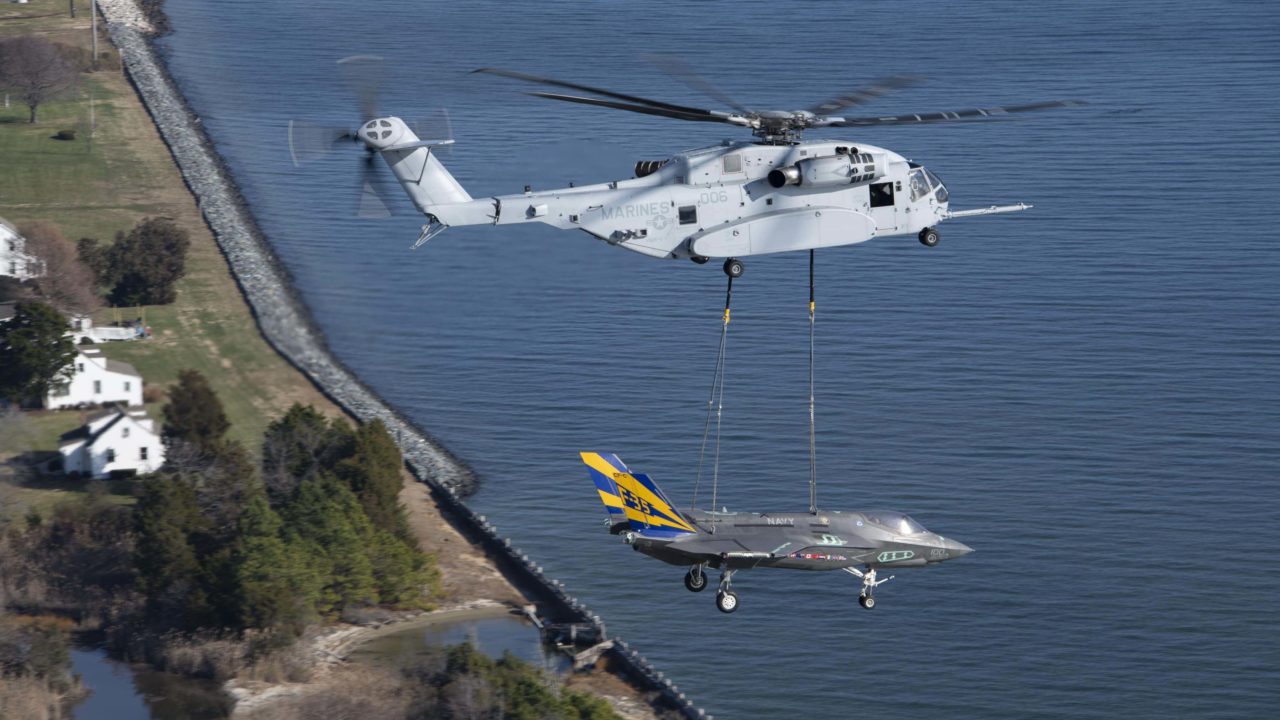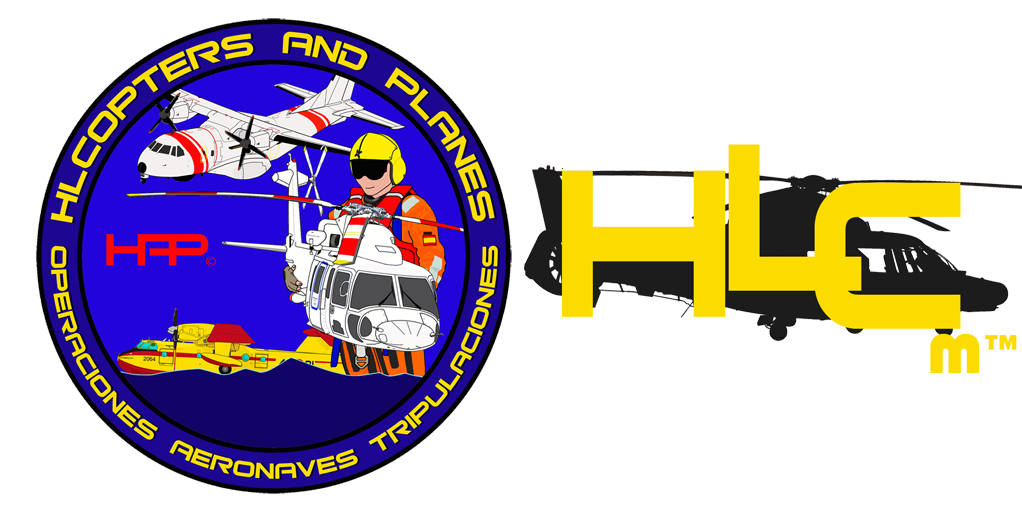
The structure is from the first F-35C carrier variant aircraft, CF-1, a former developmental flight test jet from the Patuxent River F-35 Integrated Test Force (ITF).
ITF test teams collaborated with Marine Operational Test and Evaluation Squadron One (VMX-1) and a Marine helicopter support team with Combat Logistics Battalion (CLB) 24, Combat Logistics Regiment 2, 2nd Marine Logistics Group to conduct the lift.
U.S. Navy photo by Kyra Helwick.
NAVAL AIR SYSTEMS COMMAND PATUXENT RIVER, Md. — The Sikorsky CH-53K King Stallion is the most powerful helicopter ever developed by the United States government.
The new-build helicopter, made by Sikorsky, will continue to fill the CH-53E Super Stallion aircraft mission as a pillar of logistics and assault support for the U.S. Marine Corps efforts, but with significant improvements such as state-of-the-art, fly-by-wire technology reducing pilot work load, contributing to aircraft stability, and improving overall safety.
The recent full rate production decision for the CH-53K King Stallion is validation of the aircraft’s value to the U.S. Marine Corps and last February’s test lift is one more demonstration of its performance and reliability.
The NAS Patuxent River F-35 Integrated Test Force (ITF) test team, Naval Air Warfare Center Aircraft Division (NAWCAD) Cargo Lab, and others ensured a successful lift and flight by conducting load certification testing, sling configuration analysis, and cargo characteristics documentation were completed as required. Data from the tests will inform the flight envelope for future events. An earlier crane test lift verified the sling, rig, pitch and bank attitudes of the jet, and control surface states.
The aircraft lifted is a developmental test carrier variant F-35C fighter jet that had accrued 750 flight hours during 450 test flights between 2010 and 2016. The F-35C and rigging weighed about 22,000 pounds after removal of its mission and propulsion systems, outer wings, and additional equipment.
The Sikorsky CH-53K King Stallion is currently cleared to conduct a 27,000-pound external lift and is projected to be cleared for a 36,000-pound external lift, nearly three-times more under high, hot conditions than its predecessor, the CH-53E.
In September 2021, the CH-53K performed its first operational mission by lifting a Navy MH-60S Knighthawk helicopter from a 12,000-foot mountain top in California. That aircraft weighed approximately 15,000 pounds and was successfully transported 23 nautical miles to Fallon, NV.
“This type of mission is precisely what the K was designed and built to do,” said Col. Kate Fleeger, program manager for the Heavy Lift Helicopter Program Office (PMA-261). “It continues to prove its value in support of Marine Corps operations, transporting equipment that no other rotary wing platform can lift.”
The CH-53K entered its full rate production and deployment phase in December and is on schedule to declare Full Operational Capability in FY2029.
The F-35 Lightning II Joint Program Office (JPO) leads the life-cycle program management of the F-35A, F-35B, and F-35C; the fifth-generation joint strike fighter (JSF) air system of choice for the U.S. Air Force, U.S. Navy, U.S. Marine Corps, international partners and foreign military sales customers.
Heavy Lift Helicopter Program Office (PMA-261) manages the cradle-to-grave procurement, development, support, fielding and disposal of the entire family of H-53 heavy lift helicopters.
For more Hlcopters Magazine breaking news, stories, images and videos visit hlcopters.com and follow us on Facebook, Twitter, Instagram and YouTube.
The appearance of U.S. Department of Defense (DoD) visual information does not imply or constitute DoD endorsement.

